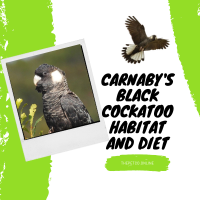Carnaby’s Black Cockatoo Habitat And Diet known as Carnaby’s White-tailed Black Cockatoo (Calyptorhynchus latirostris), is a striking and unique bird native to Western Australia. Known for its distinctive white tail and cheek patches, this species plays a crucial role in its ecosystem but faces numerous threats leading to its endangered status. This article will explore various aspects of Carnaby’s Black Cockatoo, including its habitat, diet, adaptations, and conservation efforts, to provide a comprehensive understanding of this magnificent bird.
Carnaby’s Black Cockatoo Habitat And Diet
Carnaby’s Black Cockatoo primarily inhabits Banksia woodlands and tree hollows across Western Australia, particularly on the Swan Coastal Plain. These habitats are essential for their breeding and feeding, with their presence closely tied to specific flora such as Banksia, Eucalyptus, and Hakea species. Unfortunately, the destruction of these woodlands due to motor vehicles infrastructure projects, European settlement, and agricultural expansion has significantly reduced their habitat, leading to the need for urgent conservation measures.
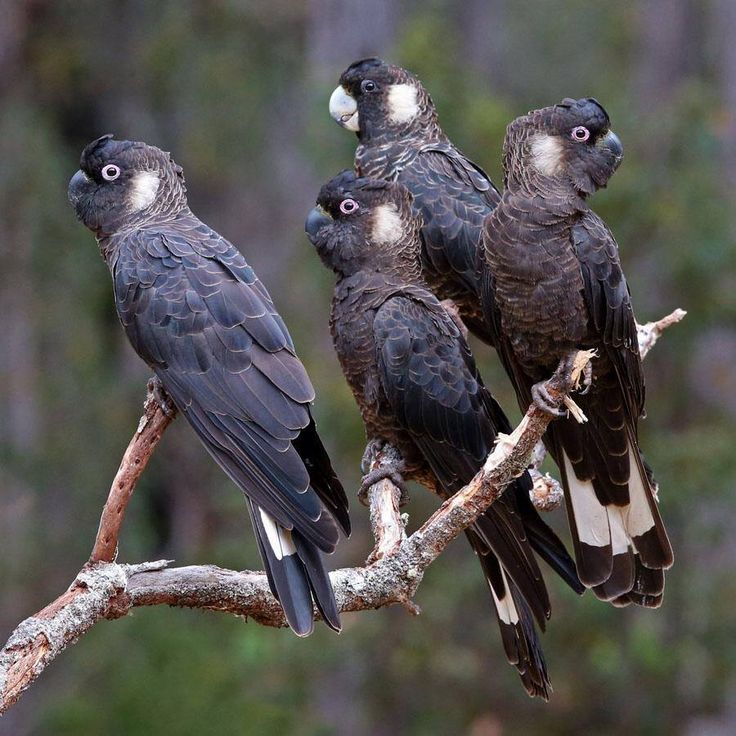
- Banksia Woodlands
Carnaby’s Black Cockatoos are heavily reliant on Banksia woodlands, where they find the seeds that form the core of their diet. These woodlands provide an abundance of food resources, especially during the breeding season when nutritional needs are higher. - Eucalyptus Forests
These forests offer additional food sources and nesting sites. The birds forage for seeds from various Eucalyptus species, which complement their diet and provide seasonal variety in food availability. - Tree Hollows
Mature trees with hollows are vital for nesting. Carnaby’s Black Cockatoos prefer large hollows, which can take decades to develop, making older trees particularly valuable. These hollows are used by females to lay eggs and raise chicks, offering protection from predators and harsh weather. - Swan Coastal Plain
The Swan Coastal Plain is a significant area for Carnaby’s Black Cockatoo, offering a mix of woodlands and heathlands that provide both food and shelter. However, this region has seen extensive urban development, leading to habitat fragmentation.
Threats Carnaby’s Black Cockatoo Habitat And Diet
- Urban Development
Expanding cities and towns have led to the clearing of vast areas of native vegetation, reducing the availability of critical habitats for Carnaby’s Black Cockatoos. - Agricultural Expansion
Conversion of woodlands into farmland has resulted in significant habitat loss. This not only reduces the availability of food sources but also decreases nesting sites. - Climate Change
Changes in climate affect the growth and distribution of key plant species like Banksia, impacting the food supply for Carnaby’s Black Cockatoo. Extreme weather events can also damage habitats, making them less suitable for nesting. - Competition for Nesting Sites
Tree hollows are not only used by Carnaby’s Black Cockatoos but also by other species, including invasive birds and feral bees. This competition can lead to a shortage of suitable nesting sites.
Conservation Efforts to Protect Carnaby’s Black Cockatoo Habitat And Diet
Efforts to protect and restore the habitat of Carnaby’s Black Cockatoo are crucial for the species’ survival. Conservation strategies include:
- Habitat Restoration: Replanting native vegetation, especially Banksia and Eucalyptus species, to provide food and nesting opportunities.
- Legal Protection: Designating critical habitats as protected areas to prevent further clearing and degradation.
- Community Engagement: Involving local communities in conservation efforts, such as tree planting and monitoring programs, to raise awareness and support for Carnaby’s Black Cockatoo.
Diet of Carnaby’s Black Cockatoo
The diet of Carnaby’s Black Cockatoo mainly consists of seeds from Banksia, Grevillea, and Hakea plants. They also feed on insect larvae found in the bark of trees. The bird’s diet is well-adapted to the seasonal availability of food in its native habitat, with a preference for seeds during the breeding season and insect larvae providing essential protein for growing chicks.
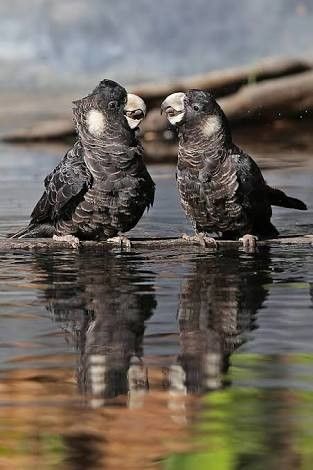
Adaptations of Carnaby’s Black Cockatoo
Carnaby’s Black Cockatoo has several adaptations that enable it to thrive in its environment. Their powerful beaks are perfectly suited for cracking open hard seed pods, while their strong claws help them grip branches securely. Their dark grey beak and pink eye rings are distinctive features that help them blend into the woodland environment, reducing predation risks. These adaptations are crucial for their survival, especially in fragmented habitats where food sources are more scattered.
Endangered Status and Conservation Efforts
Carnaby’s Black Cockatoo is listed as endangered due to habitat loss, competition for nest hollows, and predation. The Carnaby’s Black Cockatoo Recovery Plan aims to address these issues through habitat restoration, legal protection of critical areas, and public awareness campaigns. Efforts to protect the species include planting native trees, controlling invasive species, and monitoring populations to ensure their long-term survival.
Breeding and Lifecycle
Breeding for Carnaby’s Black Cockatoo typically occurs during the breeding season from July to December. They prefer to nest in large tree hollows, which are becoming increasingly scarce. The female lays one to two eggs, with chicks fledging after 10-12 weeks. The species reaches breeding age at around four years and has a lifespan of 25-40 years in the wild, provided their habitat remains intact.
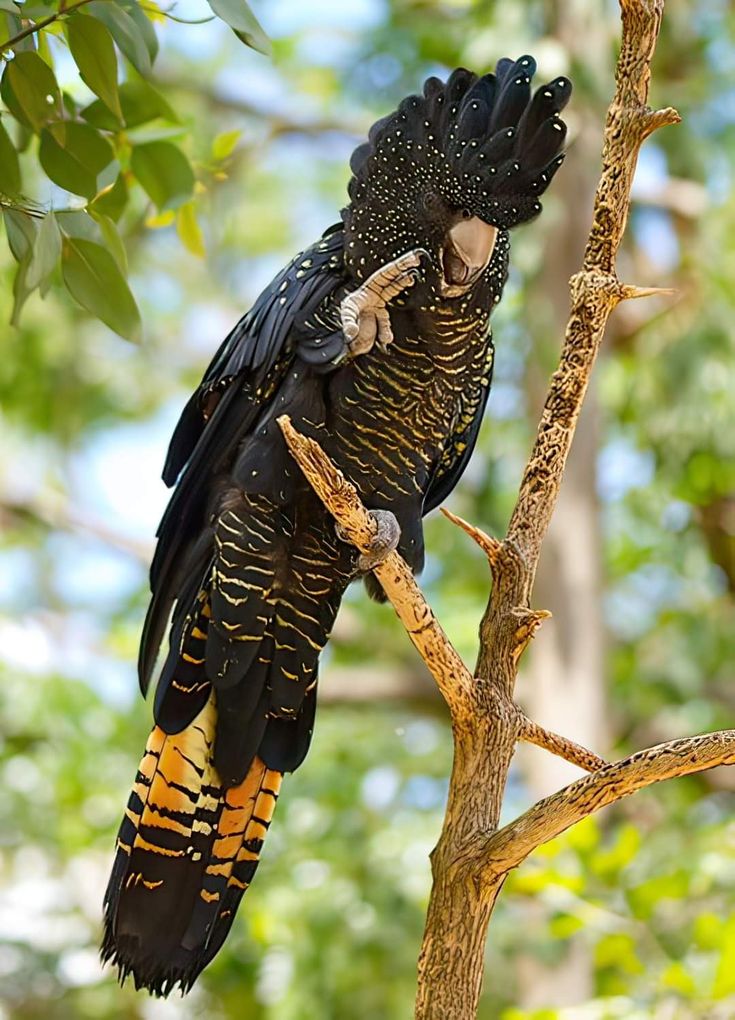
Threats to Carnaby’s Black Cockatoo
Several factors threaten the survival of Carnaby’s Black Cockatoo:
- Habitat destruction: Urban expansion and agricultural activities have led to significant habitat loss.
- Competition for nesting sites: Other species, such as feral bees and invasive birds, often outcompete Carnaby’s Black Cockatoo for tree hollows.
- Climate change: Changes in climate affect the availability of food and suitable nesting sites, further endangering the species.
Conservation Initiatives and Future Outlook
Conservation organizations, including BirdLife Australia, are actively involved in protecting Carnaby’s Black Cockatoo. These initiatives focus on habitat restoration, community education, and legal protections to ensure the bird’s survival. The success of these programs is crucial for preventing further decline and promoting population recovery.
Community Involvement in Conservation
Local communities play a vital role in the conservation of Carnaby’s Black Cockatoo. Public participation in planting native vegetation, reporting sightings, and supporting conservation programs is essential for the bird’s recovery. Increased awareness and involvement can lead to more sustainable practices and a better future for this iconic species.
Fascinating Facts about Carnaby’s Black Cockatoo
- Scientific Name: Calyptorhynchus latirostris
- Size: 53-58 cm in length
- Distinguishing Features: White tail, dark grey beak, and pink eye rings
- Diet: Primarily seeds and insect larvae
- Lifespan: 25-40 years in the wild
Related Species
Carnaby’s Black Cockatoo is closely related to other black cockatoos, such as the Red-tailed Black Cockatoo and the Short-billed Black Cockatoo. Understanding these related species helps provide a broader context for the conservation of black cockatoos in general.
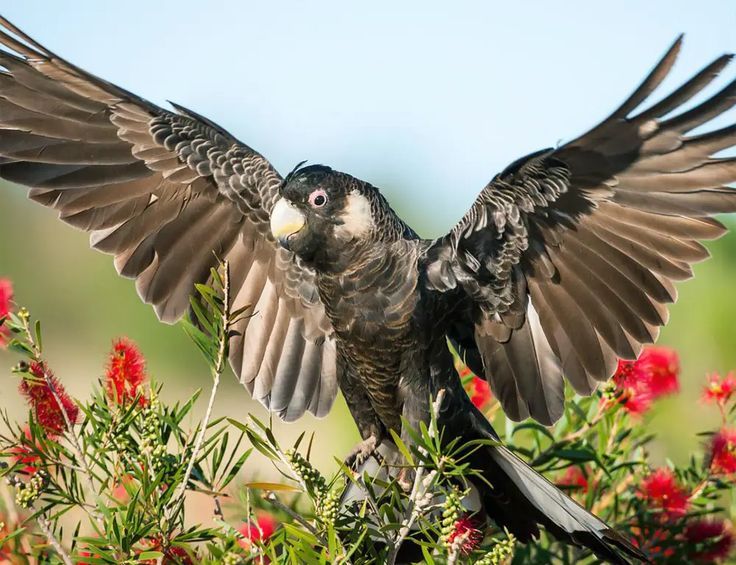
Conclusion
Carnaby’s Black Cockatoo is a remarkable bird that embodies the unique biodiversity of Western Australia. Protecting this species requires a concerted effort from governments, conservation groups, and local communities. By addressing habitat loss, promoting sustainable practices, and supporting conservation initiatives, we can ensure that Carnaby’s Black Cockatoo continues to grace our skies for generations to come.


